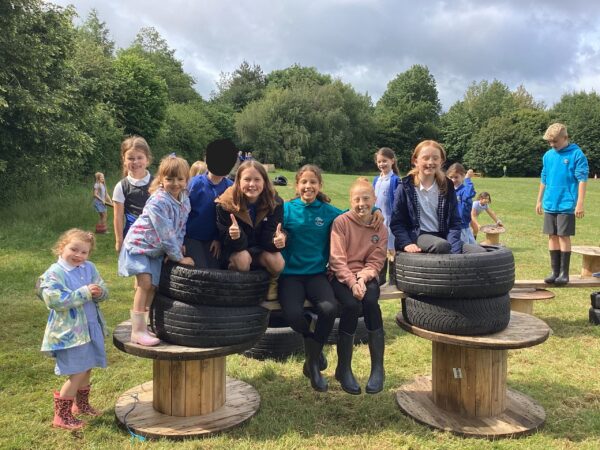
The Benefits of Loose Parts and Risky Play in Primary Education
At Pontesbury, we’re passionate about providing rich, meaningful play opportunities that help our children grow into confident, capable learners. One of the most exciting ways we support this is through the use of large loose parts and risky play in our outdoor areas.
What Are Loose Parts?
Loose parts are simple, everyday materials that children can move, build with, and explore freely. In our outdoor environment, you’ll see items like:
- Wooden planks
- Tyres and crates
- Pallets
- Tubes and pipes
These materials aren’t toys in the traditional sense—but that’s what makes them so powerful. With no defined purpose, children are free to use their imagination, creativity, and problem-solving skills to turn them into whatever they dream up.
What Is Risky Play?
Risky play gives children the chance to explore challenge, uncertainty, and adventure. It includes activities like:
- Climbing and balancing
- Jumping from heights
- Building with large or heavy materials
- Exploring speed and movement
It’s important to know that risky play is not about being unsafe—it’s about learning how to manage risk. Under careful adult supervision, children learn to assess situations, make decisions, and build resilience.
Why It Matters
Research consistently shows that loose parts and risky play offer a wide range of benefits for young children:
- 🧠 Cognitive growth – Children plan, test ideas, and solve problems.
- 💪 Physical development – They build strength, coordination, and motor skills.
- 💬 Social and emotional skills – Through teamwork and shared decision-making.
- 🌟 Self-confidence – By overcoming challenges and learning from mistakes.
- 🎨 Creativity – With endless possibilities for imaginative play.
Our Approach to Safety
All of our loose parts are checked regularly, and staff are trained to support safe, positive risk-taking. We believe that children need the freedom to test their limits in a supportive environment. This helps them develop lifelong skills that go far beyond the classroom.
“We don’t just teach children to stay safe—we teach them how to be safe.”


